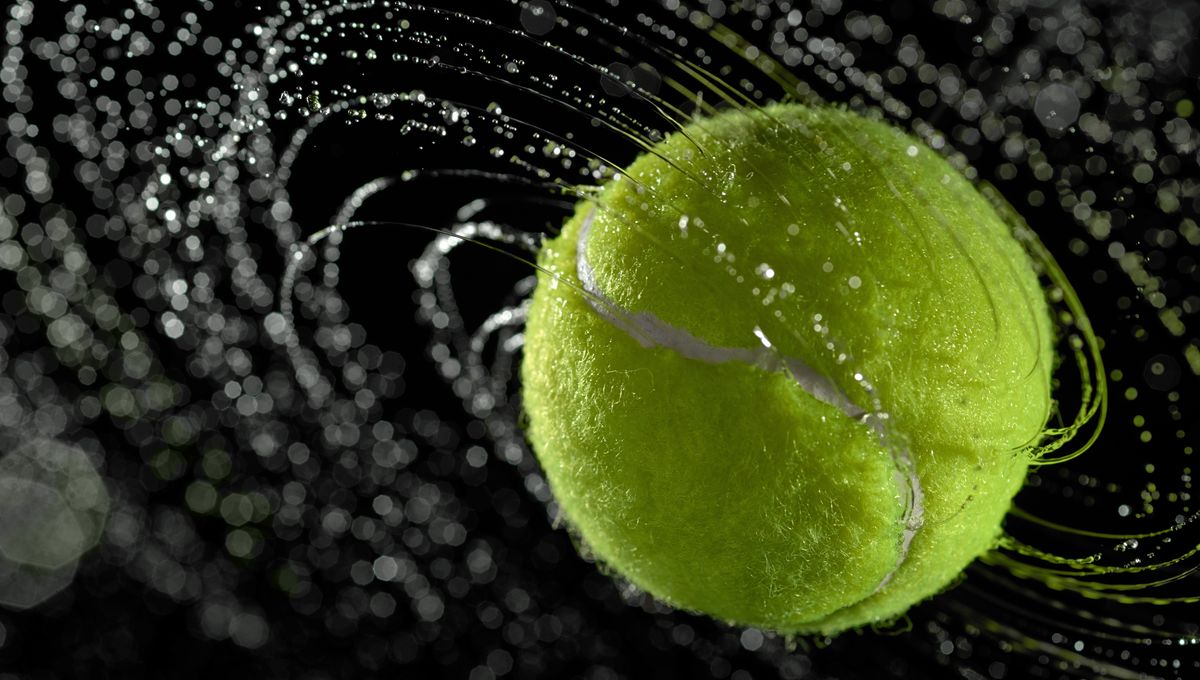
Tennis is the fourth most viewed sport in the world, with the BBC’s 2023 Wimbledon coverage smashing digital viewership records with 54.3 million streams. But amidst all the grunting, have you ever stopped to wonder why tennis balls are so different from other sports balls? And why are they so damn hairy?
A history of tennis balls
Originally known as lawn tennis, the game we see played today is thought to originate from a French handball game in the 12th-13th century. The game was originally played using a ball made of leather or cloth stuffed with rags or horsehair.
As the popularity of the game progressed, so did the properties and manufacturing process used in making tennis balls. The game soon upgraded to using volcanized Indian rubber cores, covered in white flannel.
Eventually, the balls’ flannel cover was replaced with one made of Melton cloth, which is still used today along with Needle cloth. Melton cloth has a high wool content while Needle cloth is cheaper to make and consists of synthetic fibres.
Why are tennis balls fuzzy?
The funky hairdo on tennis balls is known as the nap, and it is arguably the most important component of the ball, which is why you’ll often see tennis players giving them a thorough caressing before making their serve.
If you’ve ever tried playing tennis with anything other than a tennis ball, you may have encountered precisely the job of the nap. When hit with a racket, any smooth ball will travel far too fast and far to make for a decent match. So, among other things, the job of the nap is to slow the ball down.
The fuzz on a tennis ball increases the surface area friction, known as aerodynamic drag, which causes the air to move more slowly over the surface of the ball. As the ball flows through the air it creates what’s known as a “wake” behind it. The wake is an area of low pressure behind the ball that creates a pressure difference with the high-pressure region at the front of the ball. This causes the ball to be sucked backward into the low-pressure wake, resulting in a drag force that slows the ball down.
This backward “sucking” motion also causes the ball to spin as the air layers on top push downwards and the turbulent wake behind it causes it to rotate. A ball spinning in a clockwise direction is known as backspin, while an anti-clockwise spinning ball is topspin.
The ability to spin the tennis ball is how players tactically control the ball’s speed and trajectory through the air. The condition of the ball’s nap impacts the player’s ability to manipulate it in the air, with a tight woven nap being preferable to one that has come loose during play.
Now, the uniformity of tennis balls used in competitions is heavily monitored by the International Tennis Federation (ITF) to ensure a consistent size, shape, texture, density, and color. While tennis balls were originally black or white in color, depending on the court’s color, with the advent of television the ITF switched to “optic yellow” colored balls in 1972 to make them easier to spot on TV.
The balls’ properties are so crucial to the game that over 200 tennis ball brands are tested by the ITF each year, so now you know players aren’t just buying time before making that first serve.
All “explainer” articles are confirmed by fact checkers to be correct at time of publishing. Text, images, and links may be edited, removed, or added to at a later date to keep information current.
Source Link: Why Are Tennis Balls Fuzzy?